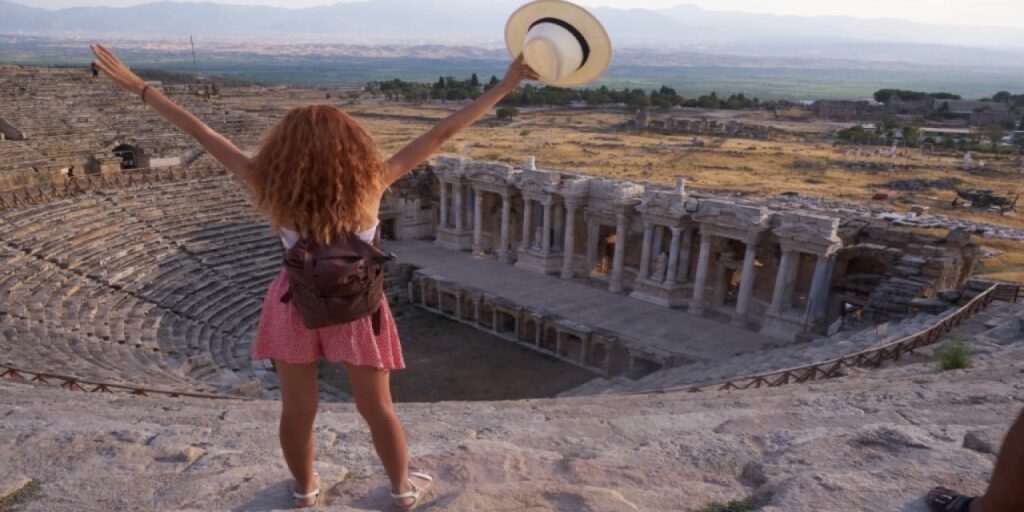Travertines Of Pamukkale and Hierapolis
What is Pamukkale? Pamukkale, meaning “cotton castle” in Turkish, literally looks like.. well, a cotton castle. Formed by a carbonate mineral left by the flowing water, Pamukkale is a series of white travertine terraced pools nestled into the hillside. People don’t seem to be completely certain as to how Pamukkale was actually created however.
At the top of Pamukkale is the incredible ancient Greco-Roman city of Hierapolis, chosen to sit atop the “cotton castle” with an abundance of hot springs.
Today, Pamukkale is an UNESCO World Heritage site and you can visit both here and Hierapolis for one ticket price.

Ancient City Of Hierapolis
The Ancient City Of Hierapolis
Hierapolis was an important religious and cultural site for the ancient civilizations in southwestern Turkey. Experts believe the area was a cult center dedicated to Cybele before the first Greek colony was founded in the area—the first known settlements in Hierapolis date back to the Iron Age.
A Phrygian temple of the mother Goddess Cybele was built in the 7th century BCE. Although the local communities used the temple to worship their gods, once the Greeks arrived, the local culture and religious cults were assimilated into the Greek ones. Under the Phrygian rule, the area was associated with the underworld; this association continued during the subsequent Greek and Roman periods. Greeks associated the temple of Hierapolis with Hades, or Pluton, in Roman mythology.
The settlement in the area became a city under the Seleucid Empire in the 2nd century BCE. Emperor Antiochus the Great populated the area with 2,000 Jewish families, which caused a mass migration of Jews to Hierapolis.
During the first century CE, the area rapidly converted to Christianity, and a church was founded in Hierapolis. However, this era was also marked by major earthquakes, the last of which occurred in 60 CE and destroyed the entirety of Hierapolis. Nevertheless, the city was rebuilt later.
Until the 12th century, the city was ruled by the Byzantine Empire and was an important religious center with numerous basilicas and the tomb of Paul the Apostle. In the early 12th century, Seljuk Turks briefly controlled Hierapolis and fell to the Crusaders in 1190. A short time after the Crusaders conquered the area, Hierapolis was abandoned.

CLEOPATRA’S ANTIQUE POOL
Situated above the Pamukkale white travertine pools is one particularly spectacular location fed by the same hot springs. Here you can bath in the same waters in which Cleopatra once swam! A professionally run modern spa facility allows you to enjoy these historical healing waters. Pamukkale classic tour available.
Unlike the white water of the lower pools the Antique Pool favored by Cleopatra, Queen of Egypt, is pure clear warm water. Once it was surmounted by a Roman Temple to Apollo with ornate roof held up with Doric columns. Imagine how Cleopatra must have experienced this when you imagine it in it’s glory day.

Pamukkale Tour